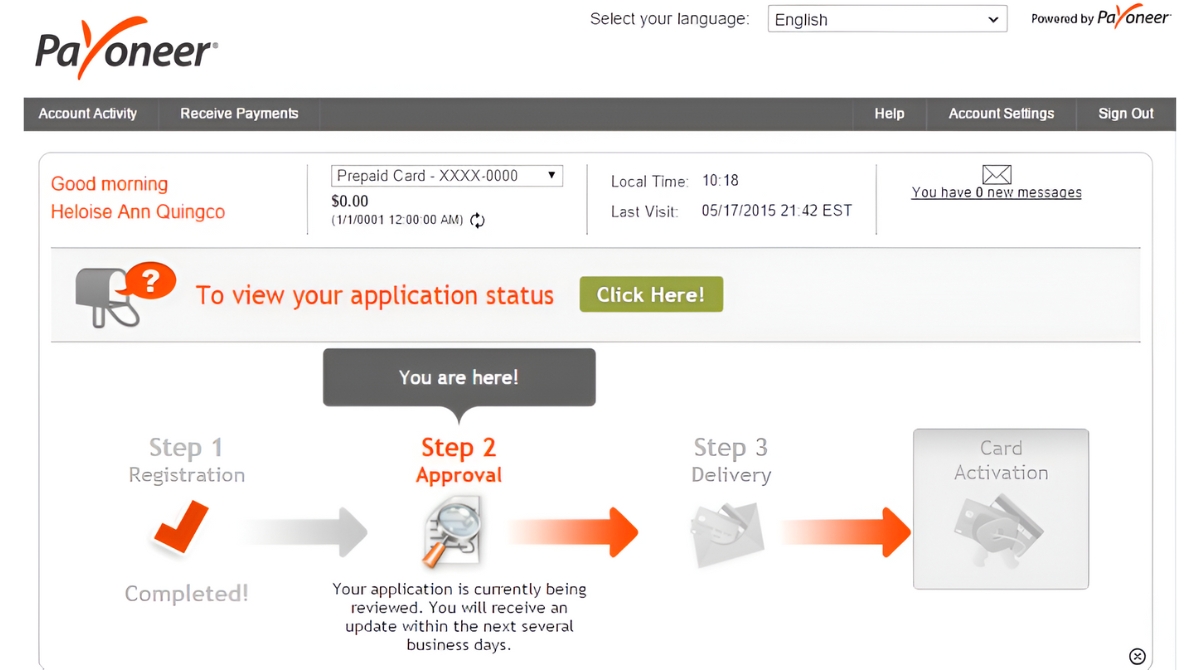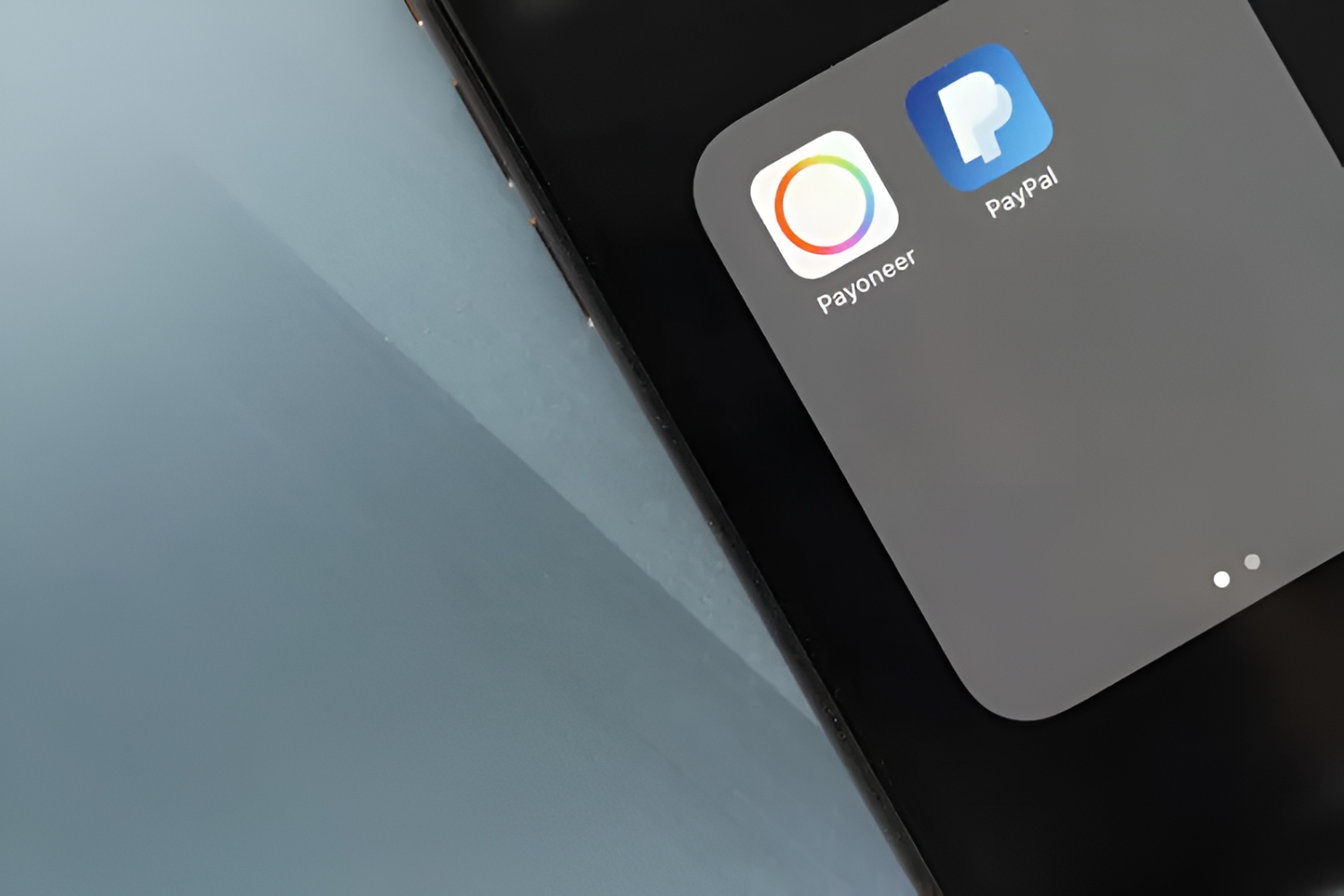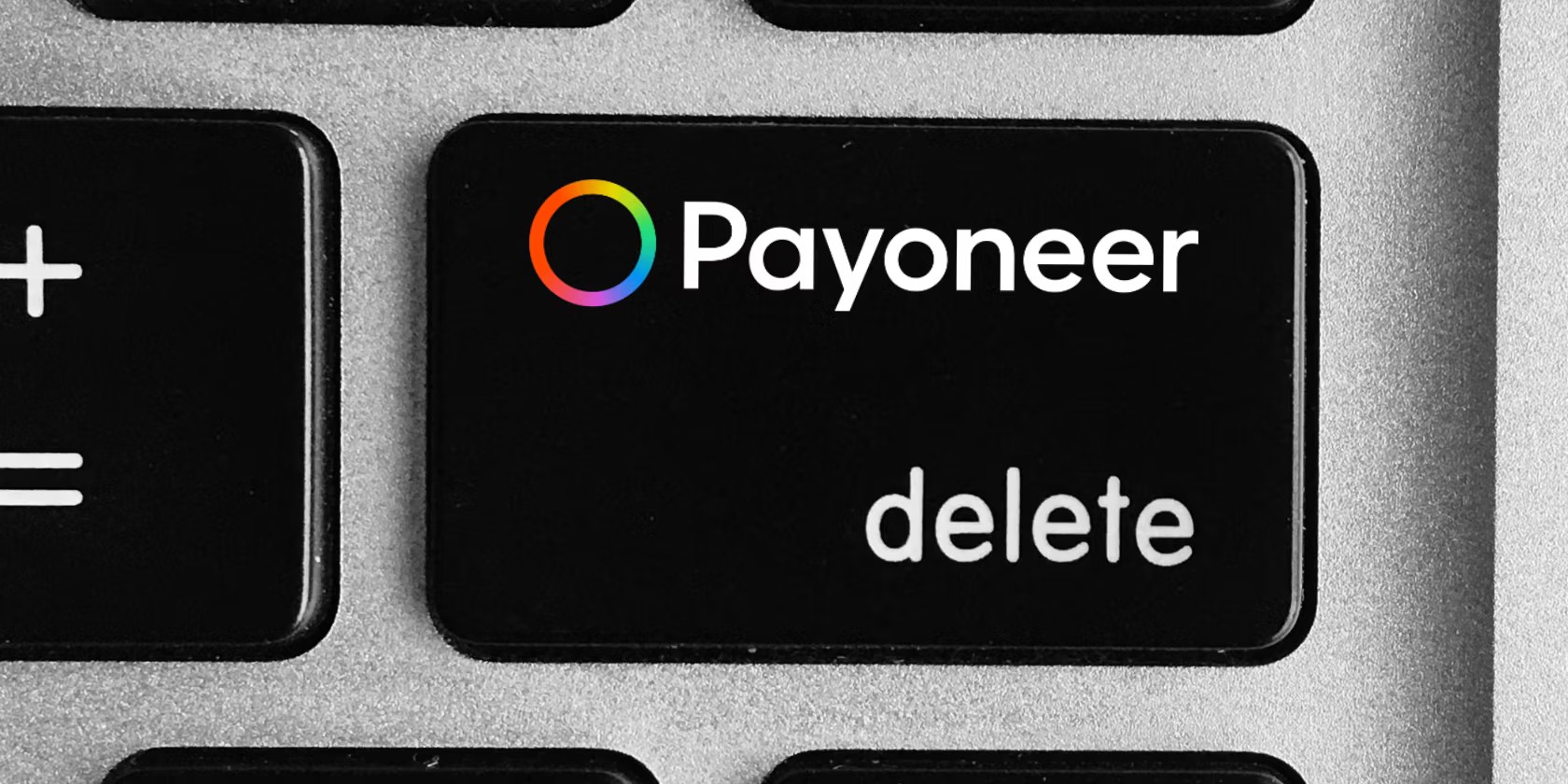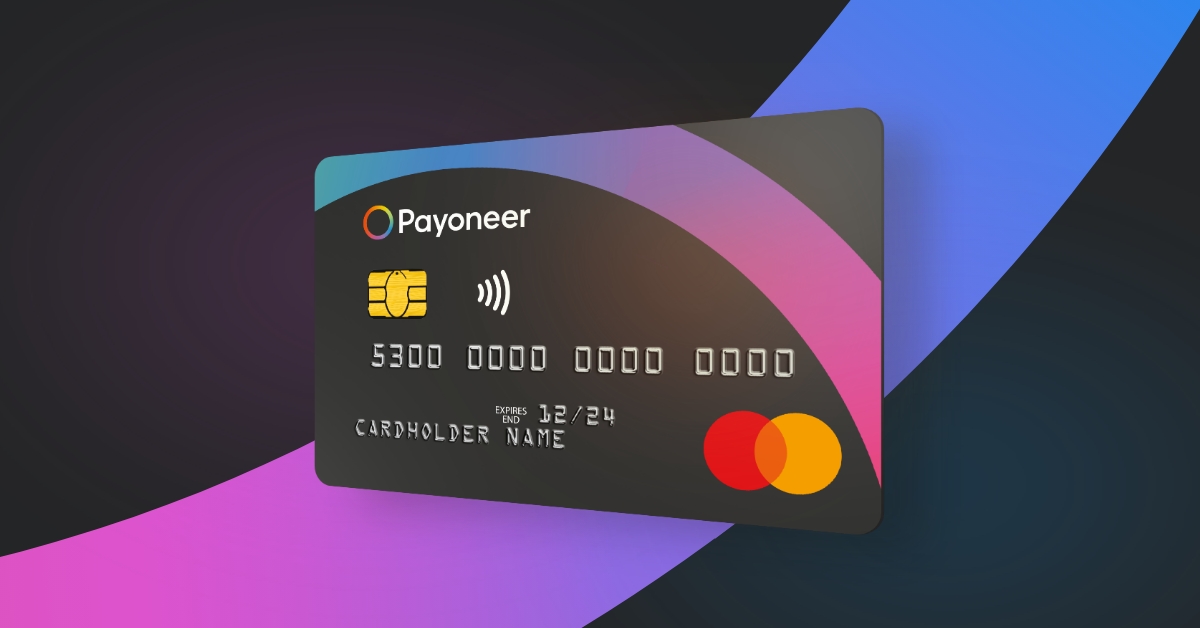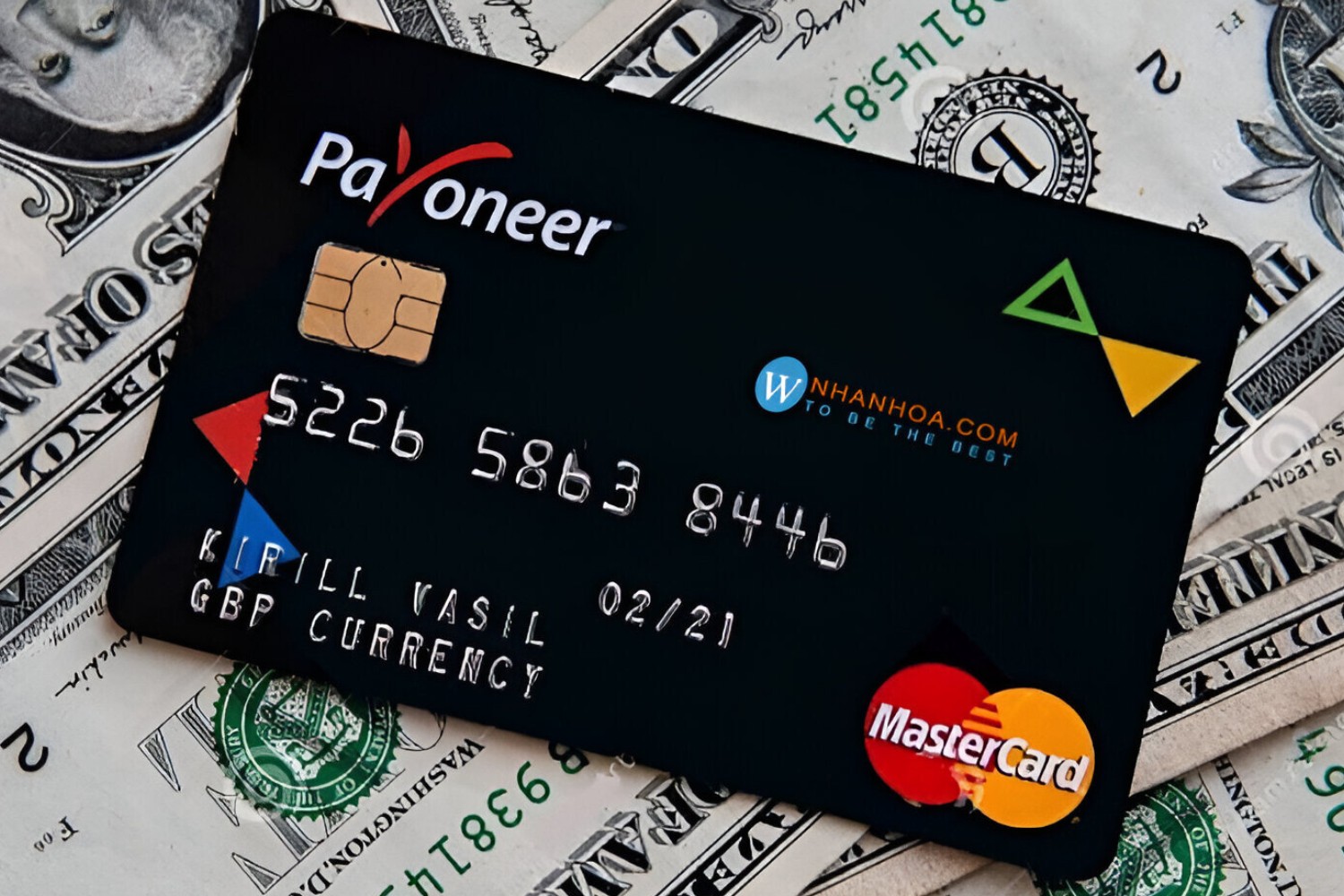Introduction
Welcome to the world of Payoneer, a global payment platform that allows businesses and individuals to transfer and receive funds securely and efficiently. Whether you are a freelancer, an e-commerce seller, or a professional providing services online, Payoneer offers a convenient way to manage your payments and expand your reach across borders.
In this article, we will guide you through the process of setting up and using Payoneer to make payments, receive funds, and withdraw your earnings. We will also provide tips and insights to help you navigate the platform with ease and confidence.
With Payoneer, you can enjoy fast and secure transactions, competitive exchange rates, and a multitude of payment options. Whether you need to pay your suppliers, receive payments from clients, or withdraw funds to your local bank account, Payoneer simplifies the process and helps you streamline your financial activities.
One of the great advantages of Payoneer is its ability to support transactions in multiple currencies. This means that you can receive payments in various currencies and even hold balances in different currency accounts within your Payoneer wallet. This flexibility eliminates the need for multiple bank accounts and saves you the hassle of dealing with complex currency conversions.
In the following sections, we will cover everything you need to know to get started with Payoneer. From setting up your account and adding a payment method, to making payments and withdrawing funds, we will provide step-by-step instructions and valuable insights to ensure a smooth and successful experience.
So, without further ado, let’s dive into the world of Payoneer and learn how this powerful payment platform can revolutionize the way you manage your finances.
Setting up your Payoneer Account
Before you can start using Payoneer, you must first set up your account. The process is quick and straightforward, requiring just a few simple steps:
- Visit the Payoneer website and click on the “Sign Up” button. You will be directed to the registration page where you will need to provide your personal and business details.
- Fill in the required information, including your name, email address, date of birth, and contact details. Make sure to use accurate and up-to-date information to avoid any issues later on.
- Choose a secure password for your Payoneer account. It is recommended to use a combination of upper and lower case letters, numbers, and special characters to enhance the security of your account.
- Select your preferred language and primary currency for your Payoneer account. This is the currency in which you will primarily receive payments.
- Provide additional information about your business or occupation, such as the type of services you offer or the products you sell. This helps Payoneer understand your business better and tailor their services to your specific needs.
- Review and accept the terms and conditions of using Payoneer. It is important to read through these terms to fully understand your rights and responsibilities as a Payoneer user.
- Complete the verification process by providing any additional documentation or identification as requested by Payoneer. This may include a copy of your valid ID or a proof of address.
- Once you have completed the registration process and your account is approved, you will receive an email notification from Payoneer. This email will contain your account details and instructions on how to access and manage your Payoneer account.
Setting up your Payoneer account is a crucial first step in utilizing the platform’s features and functionalities. It is important to ensure that all the information provided during the registration process is accurate and up-to-date, as any discrepancies could lead to delays or issues in the future.
Once your Payoneer account is successfully set up, you can proceed to add a payment method and start using Payoneer to send and receive payments securely and conveniently.
Adding a Payment Method to Your Payoneer Account
Once you have set up your Payoneer account, the next step is to add a payment method. This is essential for receiving funds and making payments using the platform. Payoneer offers various payment methods, including bank transfers, credit cards, and e-wallets, giving you flexibility and convenience in managing your financial transactions.
Here’s how you can add a payment method to your Payoneer account:
- Log in to your Payoneer account using your username and password.
- Navigate to the “Settings” tab and select “Payment Method” from the dropdown menu.
- Select your preferred payment method from the available options, such as bank account, credit card, or e-wallet.
- Follow the on-screen instructions to provide the necessary details for the chosen payment method.
- If you are adding a bank account, you will need to enter your bank’s details, including the account number, routing number, and account holder’s name.
- If you are adding a credit card, you will need to enter the card details, including the card number, expiry date, and CVV code.
- If you are adding an e-wallet, you will need to provide your account details, such as the email address associated with the e-wallet account.
- Once you have entered all the required information, click “Add” to link the payment method to your Payoneer account.
- Payoneer will then initiate a verification process to ensure the accuracy and security of the added payment method. This may involve a small transaction or providing additional documentation, depending on the chosen payment method.
- Once the verification is complete, you will receive a confirmation email from Payoneer, notifying you that the payment method has been successfully linked to your account.
It is important to note that adding a payment method may be subject to certain fees and restrictions imposed by Payoneer or the chosen payment provider. It is advisable to review the relevant terms and conditions and familiarize yourself with any associated costs before linking a payment method to your Payoneer account.
By adding a payment method to your Payoneer account, you open doors to a world of seamless transactions and financial flexibility. With your payment method in place, you can now start making payments, receiving funds, and exploring the numerous features and benefits offered by Payoneer.
Verifying Your Payment Method
Once you have added a payment method to your Payoneer account, it is important to verify it to ensure the accuracy and security of your financial transactions. Payoneer employs a verification process to maintain the integrity of the platform and protect its users from unauthorized access or fraudulent activities.
Here’s how you can verify your payment method on Payoneer:
- Log in to your Payoneer account using your username and password.
- Navigate to the “Settings” tab and select “Payment Method” from the dropdown menu.
- Find the payment method you want to verify and click on the “Verify” button next to it.
- Follow the on-screen instructions to complete the verification process for the selected payment method.
- Payoneer may require you to provide additional documentation or information to confirm the ownership or authenticity of the payment method.
- This may include submitting proof of ownership, such as bank statements or credit card statements, or verifying your identity through relevant identification documents.
- Once you have submitted the necessary verification documents or information, Payoneer will review them and notify you of the verification status.
- If the verification is successful, you will receive a confirmation email from Payoneer, indicating that your payment method has been verified and is ready for use.
It is important to note that the verification process may take some time, depending on the specific payment method and the documentation or information required. It is advisable to regularly check your email and Payoneer account for any updates or requests from the platform.
Verifying your payment method is essential to enjoy uninterrupted access to all the features and benefits offered by Payoneer. By verifying your payment method, you can ensure smooth and secure transactions, giving you peace of mind when sending and receiving funds through the platform.
Making Payments Using Payoneer
One of the key benefits of using Payoneer is its ability to facilitate seamless and secure payments. Whether you need to pay suppliers, contractors, or service providers, Payoneer offers a user-friendly platform that allows you to make payments quickly and efficiently.
Here’s how you can make payments using Payoneer:
- Log in to your Payoneer account using your username and password.
- Click on the “Send” tab in the navigation menu to initiate a payment.
- Select the recipient’s preferred currency if applicable.
- Enter the recipient’s details, such as their name and email address.
- Specify the payment amount and any additional details or reference information.
- Choose the payment method you wish to use for this transaction, such as your Payoneer balance, linked bank account, or credit card.
- Review the payment details to ensure accuracy.
- Click “Send” to finalize the payment.
- Payoneer will process the payment and send it to the recipient’s Payoneer account or their chosen payment method.
- You will receive a confirmation email from Payoneer once the payment has been successfully processed and sent.
Payoneer also offers additional features to enhance the payment process. You can set up recurring payments for regular transactions, create customized invoices for professional billing, and even request payment from clients or customers. These features provide flexibility and convenience in managing your payments and streamlining your financial operations.
It’s worth noting that Payoneer may charge fees for certain payment transactions. These fees are usually transparent and displayed during the payment process, allowing you to review and confirm before finalizing the payment.
By leveraging Payoneer’s payment capabilities, you can save time and effort in managing your financial obligations. The platform’s secure infrastructure and extensive network ensure that your payments are processed efficiently, giving you peace of mind and enabling you to focus on other aspects of your business or personal endeavors.
Withdrawing Funds from Payoneer
In addition to making payments, Payoneer allows you to easily withdraw funds from your account, providing you with convenient access to your earnings. Whether you want to transfer money to your local bank account, use an ATM to withdraw cash, or make online purchases, Payoneer offers flexible withdrawal options to suit your needs.
Here’s how you can withdraw funds from your Payoneer account:
- Log in to your Payoneer account using your username and password.
- Click on the “Withdraw” tab in the navigation menu.
- Choose your preferred withdrawal method from the available options, such as Bank Transfer or Payoneer Mastercard®.
- If you select Bank Transfer, enter your local bank account details, including the account number and the bank’s SWIFT/BIC code.
- Specify the withdrawal amount and any additional details, if required.
- Review the withdrawal details to ensure accuracy.
- Click “Withdraw” to initiate the transaction.
- Payoneer will process the withdrawal request and transfer the funds to your chosen method.
- You will receive a confirmation email from Payoneer once the withdrawal has been successfully processed.
It’s important to note that different withdrawal methods may have varying processing times and fees, which will be clearly displayed during the withdrawal process. Additionally, it’s advisable to consider currency exchange rates if you are withdrawing funds in a different currency than your Payoneer account’s primary currency.
Another option for withdrawing funds is to use the Payoneer Mastercard®. With this card, you can withdraw cash from ATMs or make purchases online or at physical stores where Mastercard is accepted. Simply load your Payoneer funds onto the card and use it as you would with any other debit or credit card.
By providing a range of withdrawal options, Payoneer enables you to access your funds quickly and conveniently, no matter where you are in the world. This flexibility allows you to manage your finances efficiently and make the most of your earnings.
Understanding Fees and Charges with Payoneer
When using Payoneer’s services, it is important to be aware of the fees and charges associated with various transactions. Understanding these fees upfront ensures transparency and enables you to make informed decisions regarding your financial activities on the platform.
Here are some important fees and charges to consider when using Payoneer:
- Account Activation Fee: Payoneer may charge a one-time activation fee when you first set up your account. This fee varies depending on your location and the type of account you create.
- Payment Fees: Payoneer charges a fee for receiving payments from clients, marketplaces, or other Payoneer users. This fee is typically a percentage of the transaction amount, with different rates for different currencies.
- Withdrawal Fees: When withdrawing funds from your Payoneer account to your bank account or using the Payoneer Mastercard®, there may be applicable withdrawal fees. These fees vary depending on the withdrawal method and can include currency conversion charges if withdrawing in a different currency than your account’s primary currency.
- Inactivity Fee: If your Payoneer account remains inactive for a certain period, Payoneer may charge an inactivity fee. It is important to regularly use your account to avoid these charges.
- Additional Service Fees: Payoneer offers additional services, such as currency conversion or expedited payments, for which a separate fee may apply. These fees are optional and only applicable if you choose to use these additional services.
It’s important to note that Payoneer’s fee structure may vary depending on your location and the specific services you use. It is advisable to review the fee schedule provided by Payoneer or contact their customer support for detailed information on fees applicable to your account.
While fees are an inherent part of using financial services, Payoneer aims to provide competitive rates and value for money. It is recommended to compare fees with other payment platforms and evaluate the features, benefits, and level of service provided by each to make an informed decision that aligns with your financial needs and priorities.
By understanding the fees and charges associated with Payoneer, you can confidently manage your finances and ensure that you are getting the most out of the platform’s services.
Tips for Using Payoneer Safely and Securely
When utilizing Payoneer for your financial transactions, it is essential to prioritize safety and security. By following these tips, you can minimize the risk of unauthorized access, fraud, and other potential security concerns:
- Keep your account credentials secure: Safeguard your Payoneer username and password, and avoid sharing them with anyone. Choose a strong, unique password and update it regularly.
- Enable two-factor authentication: Activate the two-factor authentication feature provided by Payoneer. This adds an extra layer of security by requiring a second verification step, such as a unique code sent to your mobile device, to access your account.
- Be cautious of phishing attempts: Be wary of suspicious emails, messages, or calls that ask for your account information or request immediate action. Payoneer will never ask you to provide sensitive information through email or other insecure channels.
- Verify payment requests: Before making a payment, ensure the accuracy of the recipient’s details and confirm any payment requests directly with the recipient through a separate and secure communication channel.
- Regularly review your account activity: Monitor your Payoneer account for any unauthorized or suspicious transactions. If you notice any unauthorized activity, promptly report it to Payoneer’s customer support for investigation.
- Keep your contact information up to date: Make sure your email address and phone number registered with Payoneer are current. This allows Payoneer to notify you promptly about any account-related activities or updates.
- Use secure internet connections: When accessing your Payoneer account, use a secure and private internet connection. Avoid using public Wi-Fi networks or shared computers to prevent potential security breaches.
- Regularly update your devices and software: Keep your devices and software, including operating systems and antivirus programs, up to date to protect against potential vulnerabilities and security threats.
- Educate yourself about common scams: Stay informed about common scams targeting online payment platforms. Be cautious of unsolicited offers, requests for personal information, or deals that seem too good to be true.
- Contact Payoneer support for assistance: If you have any concerns or questions regarding the security of your Payoneer account, reach out to Payoneer’s customer support for guidance and assistance.
By implementing these tips and best practices, you can enhance the security and safety of your Payoneer transactions. Payoneer is committed to providing a secure platform, but it is essential for users to be proactive in safeguarding their personal and financial information.
Remember, your security is paramount, and by taking the necessary precautions, you can use Payoneer with confidence and peace of mind.
Frequently Asked Questions about Payoneer
Here are some common questions and answers about Payoneer, a global payment platform:
- What is Payoneer?
Payoneer is a secure and convenient online payment platform that enables businesses and individuals to send and receive funds globally. It offers a range of payment solutions, including bank transfers, prepaid cards, and e-wallets. - Is Payoneer available worldwide?
Yes, Payoneer is available in over 200 countries and supports transactions in more than 150 currencies. It provides cross-border payment services, allowing users to easily send and receive funds internationally. - Can I use Payoneer for receiving payments as a freelancer?
Absolutely. Payoneer is a popular choice for freelancers and independent professionals. It allows you to receive payments from clients and marketplaces, making it easy to access your earnings. - What are the fees for using Payoneer?
The fees associated with using Payoneer vary depending on the transaction type, currency, and payment method. It is advised to review Payoneer’s fee schedule or contact their customer support for detailed information on fees applicable to your account. - Can I link multiple bank accounts to my Payoneer account?
Yes, Payoneer allows you to link multiple bank accounts to your Payoneer account. This enables you to choose the most convenient option for withdrawing funds from your Payoneer balance. - How long does it take to receive funds with Payoneer?
The time it takes to receive funds depends on various factors, such as the sender’s location, the chosen payment method, and the processing times of the banks or payment processors involved. In general, Payoneer strives to provide fast and efficient fund transfers. - Can I use Payoneer to make online purchases?
Yes, Payoneer offers a prepaid Mastercard® that you can use to make online purchases or payments wherever Mastercard is accepted. Simply load your Payoneer funds onto the card and use it like any other debit or credit card. - Is Payoneer secure?
Payoneer takes security seriously and employs various measures to protect user information and financial transactions. These include encryption, two-factor authentication, and anti-fraud systems. However, it is also important for users to take precautions and follow security best practices to ensure the safety of their Payoneer account.
If you have more specific questions or need further assistance, it’s recommended to visit the Payoneer website or contact their customer support. They will be able to provide you with detailed information tailored to your specific needs and circumstances.
Conclusion
Payoneer offers a robust and secure payment platform that allows businesses and individuals to manage their financial transactions with ease. From setting up your account and adding payment methods to making payments, withdrawing funds, and even making online purchases, Payoneer provides a range of features and options to simplify your financial operations.
Throughout this article, we have covered the essential aspects of Payoneer, providing step-by-step guidance and valuable tips to enhance your experience. By following the recommended practices, such as keeping your account secure, verifying payment methods, and understanding the associated fees, you can use Payoneer confidently and efficiently.
Remember to take advantage of the various payment options and services Payoneer offers, such as recurring payments and customized invoices, to streamline your financial management. Additionally, by staying informed about common scams and being cautious of phishing attempts, you can further protect your Payoneer account and financial information.
Payoneer’s global reach, multiple currency support, and competitive rates make it an invaluable tool for freelancers, e-commerce sellers, and professionals providing services online. With Payoneer, you can easily send and receive funds, access your earnings, and expand your business globally.
As you continue to utilize Payoneer, it’s important to stay updated on any changes to policies, fees, or new features that may be introduced by Payoneer. Regularly reviewing your account activity and contacting customer support when needed ensures a smooth and uninterrupted experience on the platform.
So, take the leap and start harnessing the benefits of Payoneer today. Simplify your financial transactions, enjoy competitive exchange rates, and unlock new opportunities for growth and success in the global marketplace.







